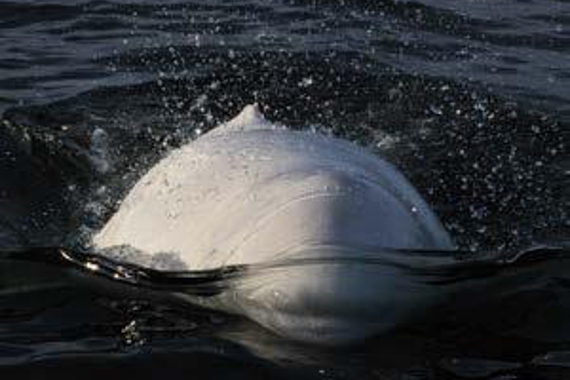
A pod of beluga whales surface while swimming close to large a commercial ship.
Photo: © Manuela Conversano
Sharing the waters with Belugas
Reducing disturbance for whales in the Saguenay–St. Lawrence Marine ParkFootnote *
What’s the issue?

Photo: © Manuela Conversano
Saguenay–St. Lawrence Marine Park, established in 1998, was created in part to help protect marine wildlife – especially threatened whales, including the world’s most southerly population of beluga whales. Among other features, the park provides essential habitat – sheltered bays and rich estuaries – for migratory whales to feed and for beluga to give birth and care for their newborn calves. But industry, recreation and other human activity in this open marine environment can cause problems for beluga and other whales, which are sensitive to disruption in their environment, especially during vital activities like feeding and resting. As co-manager of the marine park, Parks Canada is working with local communities, a number of partners, and park users to protect the marine environment to ensure that it is used sustainably. The goal is to provide a calmer environment—a major challenge that needs to be solved to protect this critical habitat in order to restore the St. Lawrence Beluga population and to protect the migratory whale feeding area.
What’s our approach?
- Identify critical habitat (for feeding, caring for young) for protection based on the biophysical characteristics and conservation issues of each of the four main ecosystems in the marine park.
- Implement mitigation measures for navigation-related impacts to restore the sound environment and reduce the risk of collision and disturbance.
- Develop conservation measures by using the best available scientific knowledge and working with local and regional organizations, universities, provincial and federal governments and the tourism and shipping industry.
- Work with partners to implement these conservation measures, monitor their effectiveness and communicate the results to visitors and the general public to raise awareness about the importance of protecting species at risk and marine ecosystems.
What’s been accomplished?
- Established an area temporarily closed to navigation to increase the level of protection of Baie Sainte-Marguerite in the Saguenay Fjord. This area is well-used by Belugas, particularly females and their young.
- Established a conservation area in the Upper Estuary that covers 44% of the marine park area. This enhances protection of an area 21% of the size of the Beluga’s known critical habitat.
- Worked with our partners to better understand how underwater noise affects marine mammals. Assessed voluntary speed reduction measures in front of Baie Sainte-Marguerite (transit zone) and collected data to measure the sound signatures of boats moving through the marine park.
- Developed monitoring protocols to measure the effectiveness of the protection measures implemented. Analyzed other sources of essential data for the continuation of the project, including whale photo identification data collected since 1994.
- Published various reports and articles, supporting development of evidence-based management measures in the Lower Estuary.
- Participated in the development of online training for boaters and kayakers navigating through whale habitat.
- Shared the project results with visitors and the general public using targeted communication channels (e.g. videos, social media).
- Date modified :